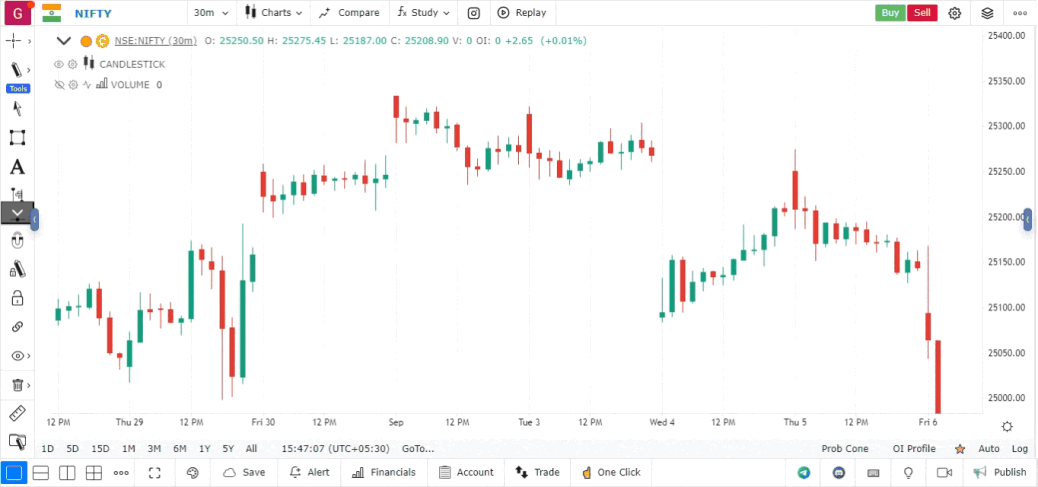Head and Shoulders Pattern
The Head and Shoulders Pattern is a classic chart formation that signals a potential reversal in trend, primarily from bullish to bearish. This pattern consists of three peaks: a higher peak (the head) between two lower peaks (the shoulders). The inverse version, known as the Inverse Head and Shoulders, signals a bullish reversal.
Components of the Head and Shoulders Pattern
- Left Shoulder: The price rises to a peak and then declines to a trough.
- Head: The price rises again to a higher peak, followed by a decline to a trough.
- Right Shoulder: The price rises to a peak similar to the left shoulder and then declines again.
- Neckline: A support line that connects the troughs (the lows) of the pattern. A breakout below this line confirms the pattern.
Steps to Use the Head and Shoulders Pattern Tool
-
Open the Platform:
- Log in to your account.
- Load the chart for the asset you want to analyze by entering the ticker symbol.
-
Choose Chart Type and Timeframe:
- Set your chart type to Candlestick for clear visualization.
- Select a suitable timeframe (e.g., daily, weekly) for better pattern identification.
-
Access the Drawing Tools:
- Click on the Drawing Tools panel in the chart interface.
- Navigate to the section that includes pattern tools.
-
Locate the Head and Shoulders Tool:
- Find the Head and Shoulders pattern tool within the drawing tools.
- This tool allows you to easily mark the components of the pattern.
-
Plotting the Pattern:
- Click on the chart to mark the Left Shoulder.
- Continue to mark the Head and the Right Shoulder.
- Draw the Neckline by connecting the troughs of the pattern.
-
Labeling and Customization:
- Optionally, label the components (Left Shoulder, Head, Right Shoulder) for clarity.
- Customize the appearance of the pattern by adjusting colors and line styles as needed.

Analyzing the Head and Shoulders Pattern
-
Pattern Validation:
- Ensure the peaks and troughs align with the expected structure of a head and shoulders pattern.
- The neckline should slope downward in a standard head and shoulders pattern.
-
Volume Confirmation:
- Look for volume patterns: volume typically increases during the formation of the left shoulder and the head but may decrease during the formation of the right shoulder.
- A significant increase in volume at the breakout below the neckline is a strong confirmation of the pattern.
-
Trading Signals:
- A break below the neckline confirms the bearish reversal signal, and traders can consider entering short positions.
- Set stop-loss orders above the right shoulder to manage risk.
Benefits of Using the Head and Shoulders Pattern Tool
- User-Friendly: The platform’s interface makes it easy to plot and analyze complex patterns.
- Real-Time Analysis: Access live market data to identify patterns and make timely decisions.
- Visual Clarity: The tool helps visualize the head and shoulders formation clearly, aiding in analysis.